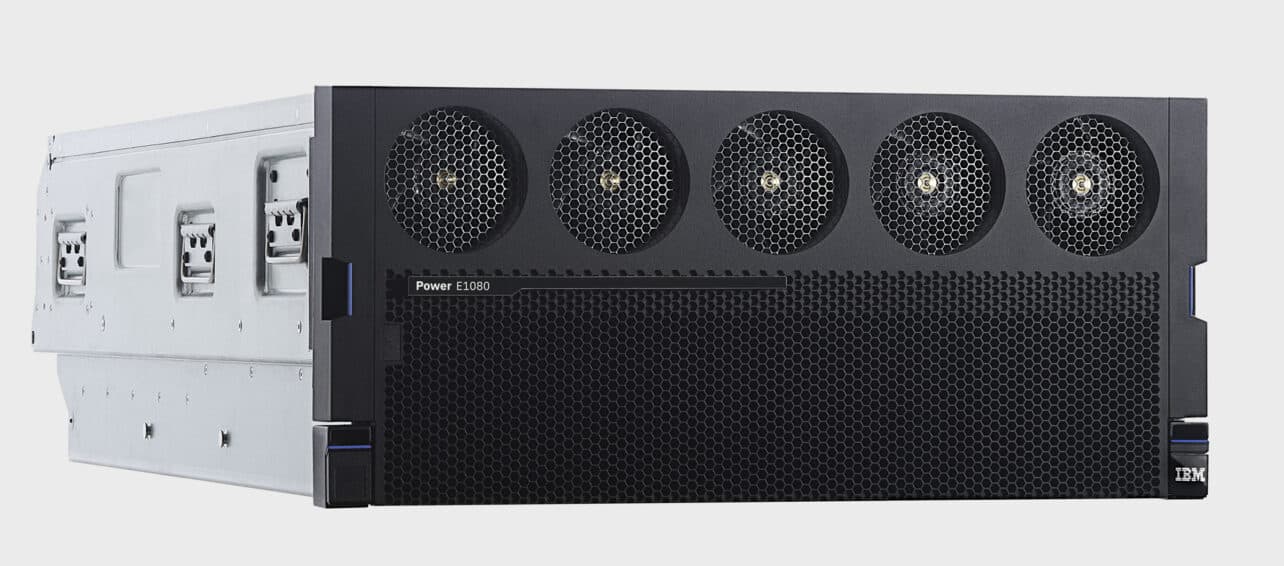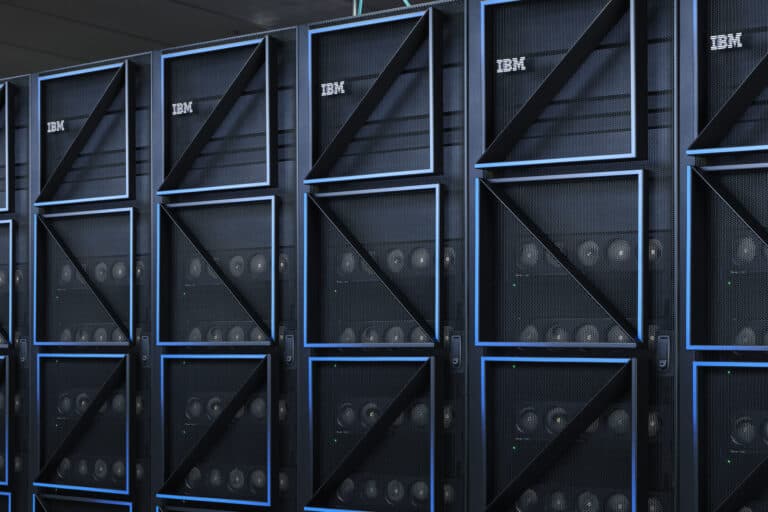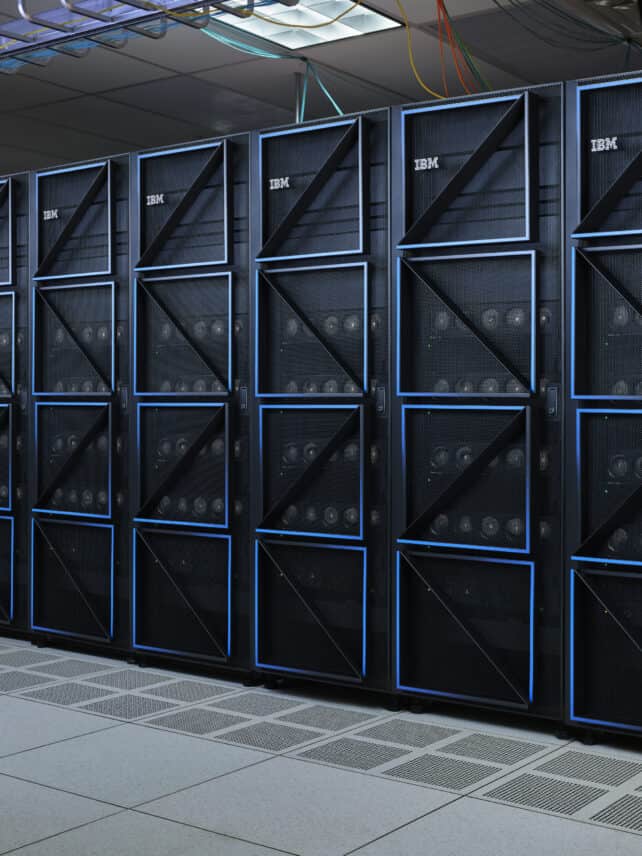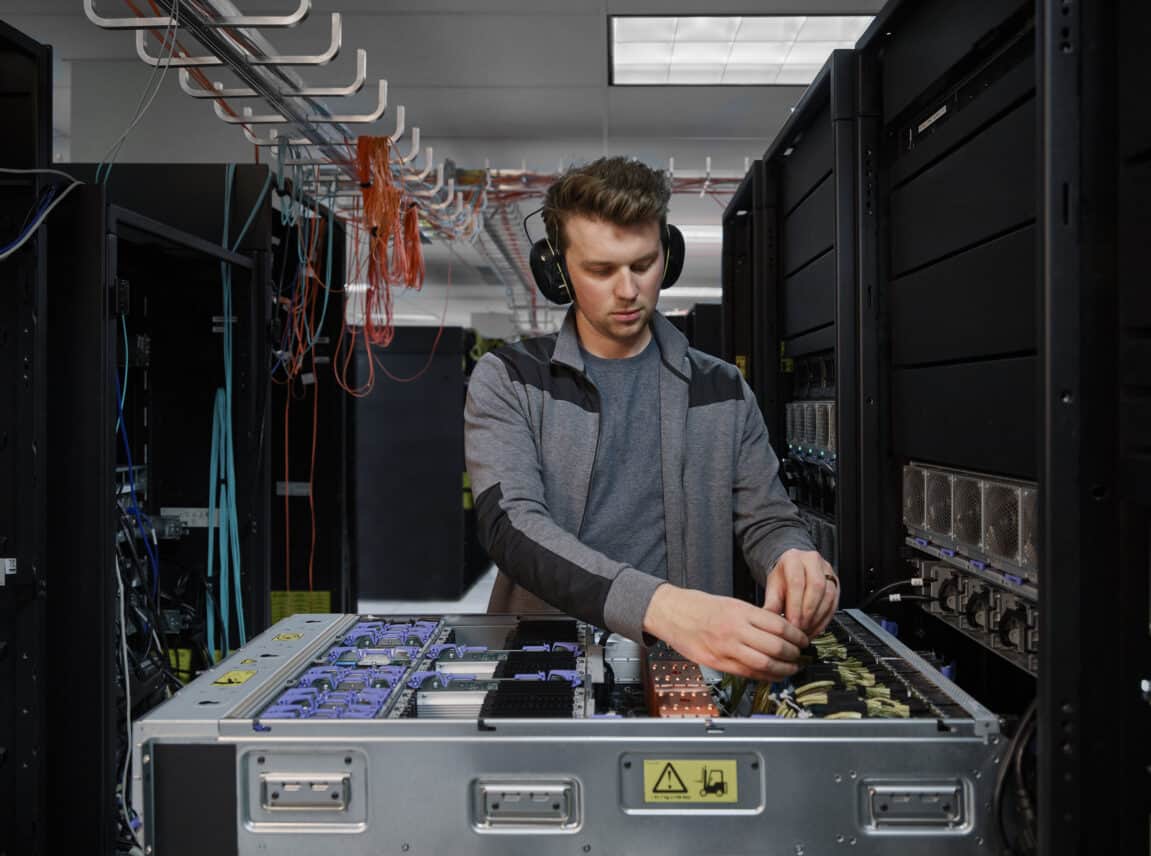The near future is hybrid, that’s not a very bold statement. IBM sees that too, and today it introduces a new server, the first in a new line, that specifically focuses on hybrid cloud environments. The Power E1080 comes with several features specifically aimed at that. In addition, there are also the necessary improvements over the servers from the previous generation in terms of performance and security. We will briefly outline the features of the IBM Power E1080 server in this article.
First of all, it is important to know that the IBM Power E1080 server features the Power10 processor. We wrote about it over a year ago. This processor (manufactured on 7 nanometers by Samsung) was the result of no less than 10 years of development time. Especially in the area of efficiency, IBM has made great strides with this latest generation. That is, the processor can carry out the same workload as its predecessor, the Power9, in significantly less time.
For the Power E1080 server, IBM claims a performance per core that is 2.5 times greater than that of x86-based servers. In addition, it has set a new world record in SAP’s standard benchmark for systems with 8 sockets. Performance at this benchmark is 40 percent higher than its closest x86-based competitor, according to IBM.
Focus on hybrid environments
Last year, at the time of the Power10 announcement, we wrote that the processor is particularly suited for heavy workloads, given its very good efficiency and thus performance per core. However, the Power E1080 server doesn’t specifically targets this type of deployment. The idea is that this server becomes the on-premises companion to your cloud environments. Red Hat obviously plays an important role in this approach. For example, the Power E1080 offers of Red Hat OpenShift and Red Hat Enterprise Linux metering up to the minute. This should keep costs manageable. This feature was already present on IBM Power Virtual Server, but is now coming to this physical server as well. Furthermore, IBM claims that the new server can deliver 4.1x more OpenShift containerized througput per core than x86-based servers.
If you want to merge on-premises and the cloud properly, it’s helpful if it’s done in a unified environment. That should be possible with the Power10-based Power E1080 combined with the cloud-based IBM Power Virtual Server. The main advantage of this is that you do not have to rebuild or refactor your applications if you want to move a specific workload to the cloud. Especially the most important applications within organizations are quite complex and difficult to adapt for deployment in the cloud.
Scalability is one of the main advantages of the cloud. IBM claims it’s bringing this to on-premises with the Power E1080. This is what IBM calls Power Private Cloud for Dynamic Capacity. That makes it possible to scale up and down according to requirements. You only switch on unused CPU power when you need it. You pay extra when you use it.
Performance enhancements
In addition to the focus on hybrid environments, the Power E1080 server also has performance improvements. IBM claims about a 50 percent improvement in performance and scalability, compared to the Power E980, the predecessor to the E1080. More specifically, this involves 30 percent higher performance per core and more than 50 percent more capacity at the socket and system level. As a result, power consumption for the same workload goes down by 33 percent. Considering that the previous generation was already from 2016, it’s more or less expected that the performance enhancements are considerable. Still, these are quite impressive improvements.
IBM also promises more capabilities for AI workloads with the Power E1080. Four so-called Matrix Math Accelerators are available per core. These ensure that AI inferences are up to 5x faster than was the case with the Power E980 server. In addition to this change in hardware, it should also become easier to run your own models on the server. This thanks to things like IBM Auto-AI and various no-code tools. Furthermore, the server supports ONNX. This stands for Open Neural Network Exchange. It means that you can seamlessly transfer models using frameworks such as TensorFlow and PyTorch from x86-based systems to the IBM Power E1080.

Security
A third major component of the IBM Power E1080 where improvements have been made over the previous generation is security. In a hybrid environment, end-to-end has a different meaning than in an on-premises or a cloud environment. Securing a hybrid environment end-to-end can cause performance degradation if you are running consolidated workloads spread across the environment, especially if you are scaling up heavily. To combat that, IBM has added transparent memory encryption to the Power E1080. IBM Power10 cores also have four times as many encryption engines per core than was the case with Power9. This results in a performance per core when it comes to AES encryption that is 2.5 times higher than the previous generation.
In terms of security, it is also important to know that IBM has offerings at all layers of the system stack. Whether this is the hardware, as we saw above, or the software, such as the OS, hypervisor or applications, it doesn’t matter. For example, with IBM PowerVM, the Power E1080 has a built-in hypervisor. According to IBM, it has significantly fewer CVEs than other hypervisors. Of course, this could be due to the popularity of the various hypervisors. IBM’s does not seem to us to be the largest, so it is not the most interesting for attackers either. Nevertheless, it is of course always good to use a secure hypervisor.
Ecosystem
IBM may be big, but they are not going to win the hearts and minds of customers all by themselves in the hybrid world. It needs an ecosystem of ISVs, partners and, of course, support. The good performance in the SAP benchmark for systems with 8 sockets is a good example of how IBM builds this ecosystem. There are quite a few (large) organizations at the moment that are still thinking about how to tackle hybrid environments. For companies that use SAP, the question of how to deal with their SAP applications in such an environment inevitably arises. With the Power E1080, IBM wants to get a foot in the door here.
Finally, with the launch of the Power E1080 server, IBM has also introduced Power Expert Care to the market. This is a support package that you can purchase in conjunction with the server. It is a tiered program, where you can choose Advanced and Premium Expert Care in addition to the basic support. If you take a basic package, this will of course include the usual technical support for the server. If, for example, you also want regular hardware and software health checks and even more security options, you will need a more advanced support package.
Availability
The IBM Power E1080 server is now available for order. IBM expects to be able to ship before the end of this month (September).


